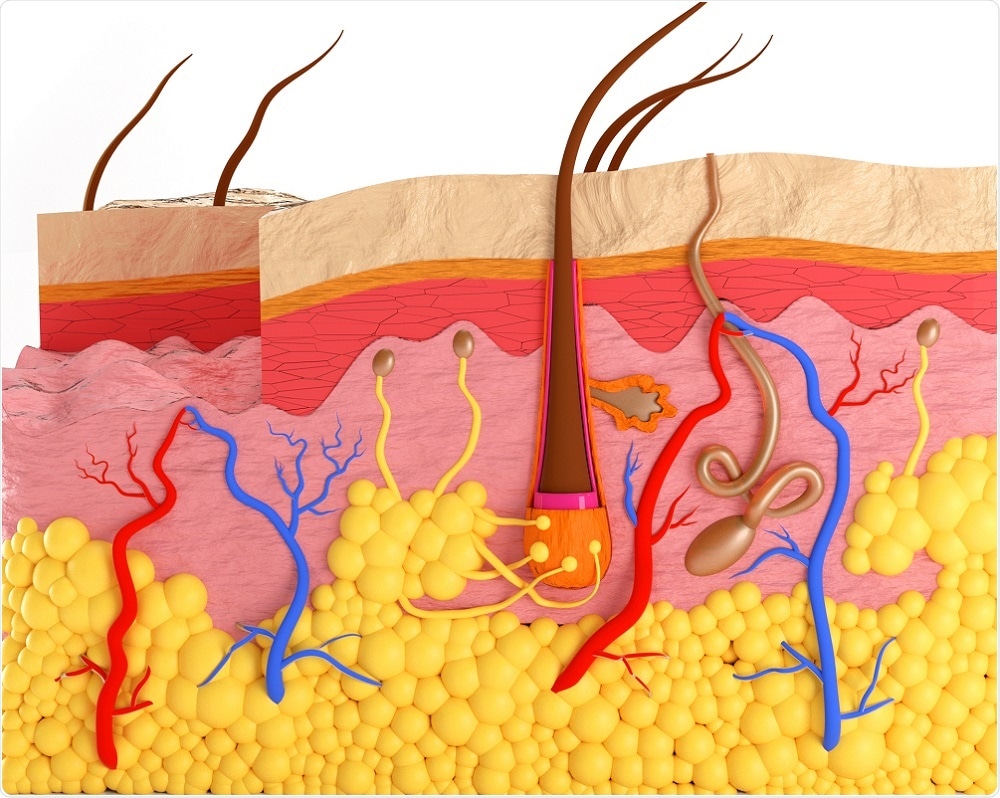Researchers from the Karolinska Institutet in Sweden have published a study in Science journal detailing the discovery of a new sensory organ located underneath the skin. The discovery could lead to the development of new, more effective pain killers.
 Anton Nalivayko | Shutterstock
Anton Nalivayko | Shutterstock
Pain is a necessary element for survival, triggering protective reactions when the body comes into contact with dangerous substances or is injured or damaged by heat or sharp objects, for example.
Made up of glial cells (cells in the central nervous system that protect and supply nutrients and oxygen to neurons) with long protrusions, the new sensory organ creates a “mesh-like network” underneath the skin which, as explained by the study, “conveys noxious thermal and mechanical sensitivity.”
Having called the newly discovered organ the nociceptive glio-neural complex, the researchers explained that the protrusions stemming from the mesh structure in the dermis extend into the epidermis and are particularly sensitive to mechanical pain – pain caused by pressure, pricking, and other harmful impacts.
The researchers discovered that when the glial complex was deactivated, the mice displayed reduced responses to pain.
Patrik Ernfors, a professor at Karolinska Institutet’s Department of Medical Biochemistry and Biophysics and lead researcher on the study, elaborates further on the team’s discovery:
Our study shows that sensitivity to pain does not occur only in the skin’s nerve fibers, but also in this recently-discovered pain-sensitive organ. The discovery changes our understanding of the cellular mechanisms of physical sensation and it may be of significance in the understanding of chronic pain.”
Patrik Ernfors
A new sensory organ in the skin
Until this novel discovery, it was believed that individual cells know as nociceptive fibers were responsible for triggering pain responses to harmful impacts.
“We have been thinking for probably a hundred years that pain is started from nerves in the skin,” Ernfors said. “But what we show now is that pain can also be started in these glial cells.”
The researchers are yet to determine whether the glial complex exists in humans, but Ernfors believes there is a very high chance of it being present.
Considering that all other previously known sensory organs in [mice] also exist in humans, it is possible if not likely that this sensory organ is also present in our skin.”
Patrik Ernfors
The implications of this new discovery are numerous. Knowledge of how to treat neuropathic pain disorders may be advanced, and further investigations into the sensory organ’s network could help understand debilitating conditions such as allodynia (where the skin is extremely sensitive to touch, inducing intense pain) and lead to treatments.
Luana Colloca, a neurophysiologist and associate professor at the University of Maryland School of Medicine who was not involved with the research, dubbed the discovery as “appealing”, saying that it is “exciting to know that there is a system that is much more than the nociceptive fibers that we teach about to our students.”
Journal reference:
Abdo, H., et al. (2019). Specialized cutaneous Schwann cells initiate pain sensation. Science. https://science.sciencemag.org/content/365/6454/695